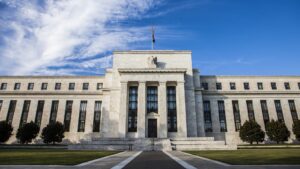Understanding Interest Rates: What You Need to Know for Your Personal Finance
At Extreme Investor Network, we believe that staying informed about economic trends is essential for effective personal finance management. Recently, much speculation has surrounded the Federal Reserve’s interest rate decisions, especially in light of public comments from influential figures. In this blog post, we will unpack the potential implications of the Federal Reserve’s actions, including their effects on various types of loans and savings, and offer unique insights to help you navigate this challenging financial landscape.
The Fed’s Current Stance
The Federal Reserve is poised to maintain its current interest rates following its upcoming two-day meeting. Even amidst demands for immediate reductions in interest rates—exemplified by recent comments from President Trump—the Fed has proceeded cautiously. After increasing its benchmark rate by 5.25 percentage points from 2022 to 2023 to combat ongoing inflation, the central bank recognizes that inflation still hovers above its 2% target.
Consumers feeling the pinch of high prices and borrowing costs will find little relief in the immediate future. As LendingTree’s Chief Credit Analyst Matt Schulz aptly noted, “Anyone hoping for the Fed to ride in as the cavalry and rescue you from high interest rates anytime soon is going to be really disappointed.” This sentiment emphasizes the importance of proactive financial planning.
How Interest Rates Affect Consumers
The Federal funds rate, which determines how banks lend to one another overnight, indirectly impacts the interest rates consumers experience with loans and savings.
Credit Cards: The Direct Link
For those reliant on credit cards, the implications of the Fed’s decision are immediate. Credit cards typically carry variable interest rates, tightly linked to the Fed’s benchmark. Although the Fed cut its benchmark interest rate by a full percentage point last year, the average credit card rate now exceeds 20%, a record high according to Bankrate.
Actionable Insight: If you’re struggling with high-interest credit card debt, consider seeking balance transfer offers with lower introductory rates or look into debt consolidation options to reduce the amount you pay in interest over time.
Mortgages: Staying Fixed
Mortgage rates have, surprisingly, remained elevated even as the Fed has cut rates. Since 15- and 30-year mortgages are fixed and primarily linked to Treasury yields rather than the federal funds rate, many homeowners won’t feel the effects of a rate decrease unless they decide to refinance.
Currently, the average rate for a 30-year mortgage stands around 7.06%. For potential homebuyers, this adds to affordability issues, which can feel overwhelming in the current market.
Actionable Insight: If you’re a homeowner with a fixed mortgage, now might be the right time to reassess your financial strategy, focusing on budgeting and savings to manage costs more effectively while the market stabilizes.
Auto Loans: A Rapidly Growing Burden
With car loans representing one of the fastest-growing segments of consumer credit, the average rate on a five-year new car loan now sits at approximately 7.47%. This increase is largely due to rising car prices, pushing total auto loan balances beyond $1.64 trillion.
Actionable Insight: Keep an eye on upcoming vehicle trends and be strategic about your purchases. Explore alternative financing options that may offer better deals, particularly during promotional periods.
Student Loans: Fixed Rates, Variable Havoc
While federal student loans feature fixed interest rates, students financing their education for the 2024-2025 academic year are seeing a significant increase to 6.53%. Private student loans, on the other hand, may carry variable rates, making these borrowers vulnerable to rate fluctuations.
Actionable Insight: If you’re a current student or parent taking on educational debt, factor in these increasing rates while evaluating your repayment plans. Consider exploring income-driven repayment options if you anticipate financial strain post-graduation.
Savings Rates: A Silver Lining
Despite the Fed’s complex maneuvering, savers can take solace in the higher yields provided by top online savings accounts, which currently offer returns of nearly 5%. The importance of building an emergency savings fund cannot be overstated, especially in uncertain economic times.
Actionable Insight: Choose high-yield online savings accounts for your emergency fund to maximize your savings potential while you wait for interest rates to stabilize.
The Bottom Line
In these rapidly changing economic times, your personal finance strategy needs to be adaptable. At Extreme Investor Network, we encourage you to take an active role in monitoring interest rates while seeking opportunities to optimize your financial health. Whether through managing debt, pursuing beneficial loan options, or boosting your savings, being proactive today can set you up for a more secure tomorrow.
Stay informed, stay engaged, and remember: your financial freedom relies on the choices you make today.

